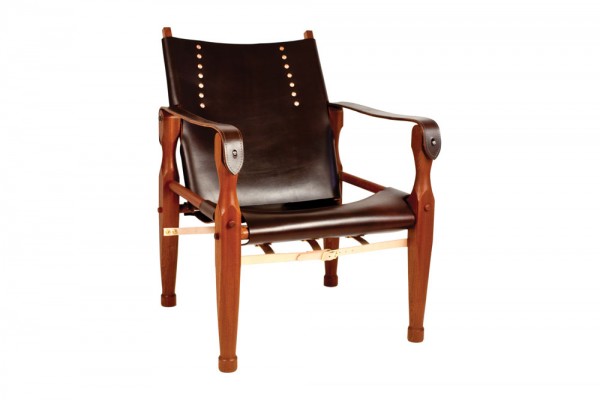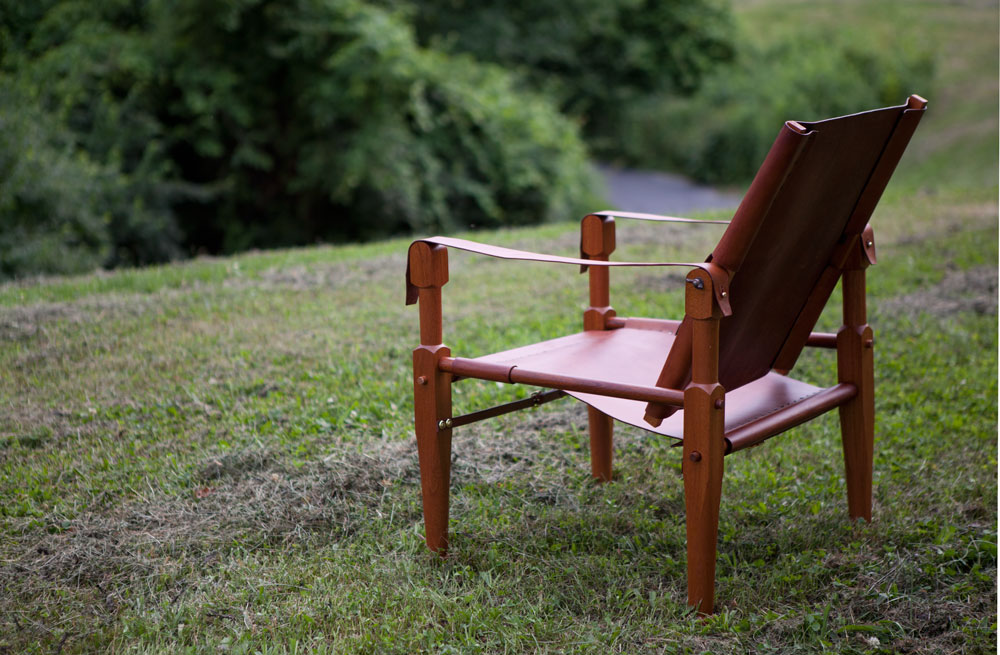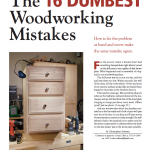We may receive a commission when you use our affiliate links. However, this does not impact our recommendations.
Making good food is a lot like making good furniture – you need good raw materials, skill and a decent set of basic tools.
Last weekend I was talking to my brother-in-law about his job, which is supplying high-quality ingredients to restaurants. He’s been in the business long enough that he ends up mentoring young restaurateurs. When he works with them in developing menus, he gives them this advice:
“Look at the recipe once a day. Get your employees to look at the recipe once every day.”
It’s a bit of advice that has stuck in my head all week, both as an enthusiastic home cook and a woodworker who makes furniture to sell. As a cook and a builder, I am happy to improvise when I need to. If I can’t get my hands on something – black walnut or walnut oil – I don’t mind taking a detour with different raw materials.
I’ve also found there is a “danger zone” for me both with recipes and furniture plans.
After I’ve made a dish or a chair a few times I’ll begin to experiment with the ingredients, the proportions or the curves. If I’m being honest with myself, about half the time my experiments improve the result. The other half of the time they diminish my work or make no appreciable change.
A 50 percent success rate is not good.
So I think it’s important to return to the recipe – a lot – before making significant changes.
A good example in my personal work is my recipe for chicken pot pie and my designs for Roorkee chairs.
When I first started making these pies and chairs, I stuck to historical models – poaching the chicken and using ash and canvas. After the first six or seven pies and chairs, I began adding sweet peas to my pies and altering the ankles of the legs of my chairs.
Something snapped me back to the original recipe for both items. And I made another dozen chairs and at least 50 pies to the original recipe before I allowed myself to tinker with the processes. By that time, I could make these things in my sleep, and my results were always the same.
That’s when I allowed myself to alter the ratio of water and milk in my pot pie’s sauce, and to re-imagine the leg turnings of my chairs. I understood them – inside and out – and could see how changing one small thing would reliably change the result.
I still like to return to the recipe now and again. And when I look at the recipe in my Better Homes & Gardens cookbook I can see its flaws. Same with the Roorkee – beefing up the legs and stretchers added to the chair’s masculine stance and overall strength.
So experiment. But become the master of a design or a recipe before you even consider changes.
— Christopher Schwarz
Here are some supplies and tools we find essential in our everyday work around the shop. We may receive a commission from sales referred by our links; however, we have carefully selected these products for their usefulness and quality.












I worked as a pastry chef for many years. Learning new recipes and new techniques involved paying very close attention to the instructions of the masters who came before. Only after mastering a technique did I allow myself to push the limits of the proportions of ingredients or try to find a shortcut. I found this to be the best way to learn what was possible. When I trained young apprentices, many wanted to experiment right away. The lure of being creative with food, meant that they were impatient with the process of first learning the basics and trying to master them before pushing the boundaries. I imagine it’s the same with most crafts.
Great article. Reminds me of coach John Wooden. Every year he made his team, no matter how talented they were, go back to the basics of dribbling, passing, guarding, etc. He believed that mastering the fundamentals opened the door for more innovative plays.
Yes … and we also have trash cans to deal with our mistakes.
On the food theme, have you seen the Michael Pollan series “Cooked”, or read the book? His comments in the final episode remind me a lot of your descriptions of American anarchism.
Any time I say “chicken pot pie” around my 5 year old, even if he’s not involved in the conversation, he belts out, “chicken pot, chicken pot, chicken pot piiiiiiiiiiiie…”
https://www.youtube.com/watch?v=ApmvDU5RmyY
I consider myself a successful parent based on this one thing alone.
I’ve never made something with wood consistently the same way 30 times to think that I can start fidgeting with the recipe. The one finished product I do ever sell ends up being made to customer specifications, so it is different every single time. The basics of the product – the joinery, the finish – tend to be similar or the same, but I do things to each one to make them different from the one before or the one after, whether it is changing dimensions or accouterments or using different materials.
Hopefully this is where the four years (Ok… maybe five) of studio art classes in college pay off. Good aesthetics comes fairly easily to me. I don’t have to make a design idea 30 times (out of wood) in order to be content with how it looks aesthetically and how it works functionally. But I do draw it out, think it out, mock it up, and/or prototype it many times over; possibly with somewhat similar effects.
But I like this idea and will keep it in the back of my head for future reference. I’m sure there is some way I can apply it to the way I work.
When you have taken ingredients from scratch to the finished item enough times — my wife, a cook, would say the magic number is never less than 30 times — then you understand the item pretty well and how its ingredients work together.
At that point you know enough to start “playing jazz” with the item. Although there is still room for improvement, both for you and the item.
And if you succeed half the time I’d call that a pretty good rate. Maybe not for professional food service, but when you are experimenting for personal discovery, that’s not bad at all.
Reading this over twice, I see two pieces of advice:
-Establish a baseline, which is is basically your control sample.
-Perform experiments, and gauge your results against the control sample.
Fair assessment?